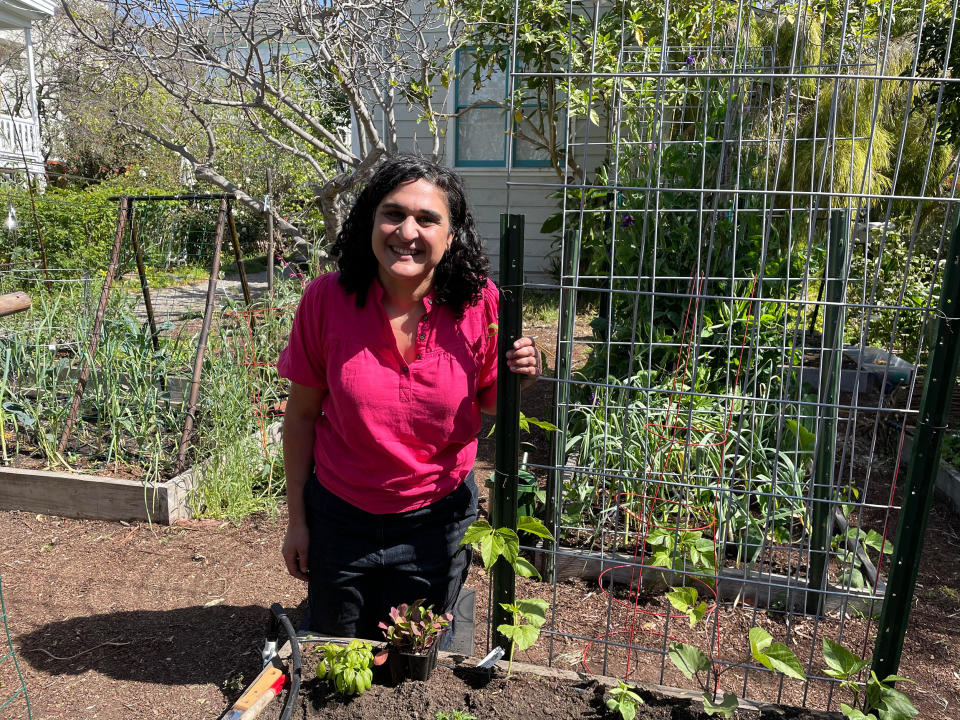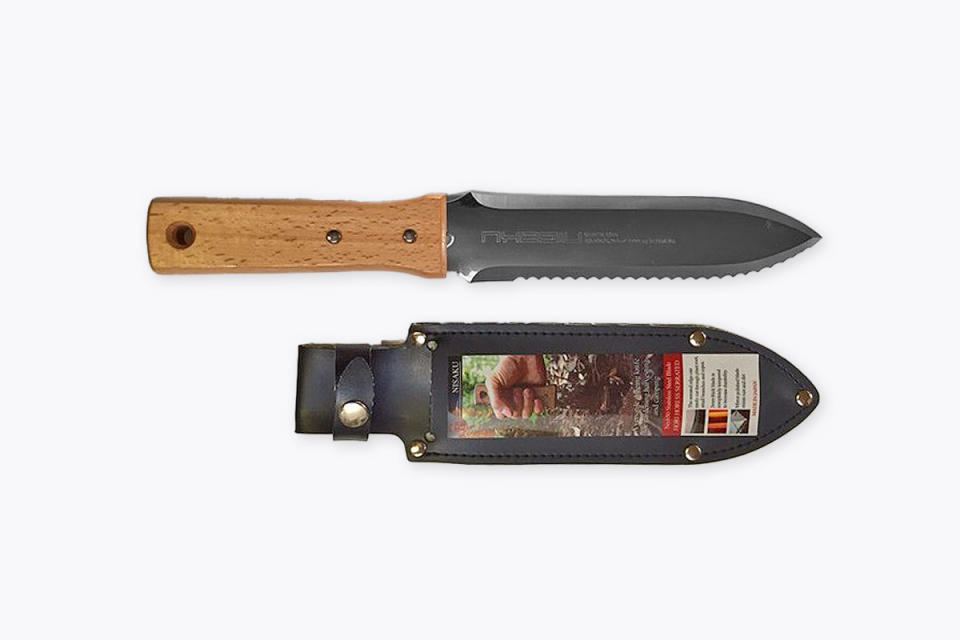Samin Nosrat guides Al Roker through planting his own vegetable garden
- Oops!Something went wrong.Please try again later.
- Oops!Something went wrong.Please try again later.
As part of our month-long "TODAY Goes Green" series, Al Roker rolled up his sleeves to learn how to plant a successful vegetable garden — and found that it's not as difficult as he thought.
Al worked with chef Samin Nosrat to plant a thriving garden in his backyard. Nosrat, the author of "Salt Fat Acid Heat" who travels the world to study cooking, said that gardening and food are inextricably linked.
"There's just so much satisfaction in growing something yourself," she said. "In this day and age, there are so few opportunities for us to do things from start to finish."
Al said, during the pandemic, he was one of many people who got into gardening while spending more time at home. Nosrat said she believes the pandemic gave people an opportunity to get "a little bit more motivated and educated about where our food comes from." She also said that gardening is "economical," since you can just pick what you need instead of buying large quantities of herbs at the store, and finds the activity to be relaxing.
Related: The pros share tips for exercising your green thumb.
To help Al and TODAY's viewers along on their gardening journeys, Nosrat shared a few tips that can help anyone develop a green thumb.
Prepare your seeds
Nosrat said it's important to prepare your seeds by soaking them at least overnight. Pour each packet of seeds into a cup, add room temperature water then leave them to sit. She said this process has "really increased the amount of germination" she gets with her plants.
Next, plant your seeds: Nosrat recommends using silicone trays, but whatever you use, fill them with potting soil. Check the back of the seed packet to see how deeply the seed should be placed in the dirt.
"A good rule of thumb is to go twice as deep as the size of the seed," Nosrat said. "I like to put two seeds per hole just so I have, like, a little insurance."

Wait for seedlings to sprout
Once the seeds have been planted, it's a waiting game, but there are things you can do while waiting for seedlings to sprout to help make the plants more successful. Nosrat recommends watering "from the bottom," instead of from the top, as most do.
"You just put a whole bunch of water in your tray, and then the seedling trays are going to absorb that from the bottom," she said. This process prevents the seedlings from being disturbed.
After a few weeks, the seedlings will be ready to plant: Nosrat said to wait until the plants are about four inches tall or have "at least four sort of vibrant, strong leaves."
Once the seedlings are grown, it's time to transfer them into your garden. No matter what plants you're working with, she said it's important to be careful with the roots.
Related: This is the guide for those with little patience and absolutely no green thumb.
"The most precious part of the plant really is the roots," she said. "You really want to be as delicate as you possibly can."
You may need to loosen the roots: If that's the case, Nosrat recommends using a small, thin knife along the sides. Once the plant is out of the tray, it's time to plant it in your garden. Place the plant in the ground so that the top of the root ball is even with the top of the soil.
Plant strategically
Before planting your seedlings, take a little time to think about the layout of your garden. Nosrat recommends plantings herbs together, since they need "about the same amount of sun and the same amount of water, so they kind of grow together really well."
Try establishing an herb box, or just setting a box with a few different herbs on your windowsill, which makes it easier to gather ingredients, since they'll all be in one place.
With some plants, like squash or cucumbers, it can be helpful to try to grow them vertically, alongside poles, stakes or a trellis, since those kinds of plants can take up a lot of room horizontally.
"If they grow vertically, they take up much less room in the garden. You have so much more room for other plants, plus they're way easier to harvest," said Nosrat. " … This is a way to make the most out of just a little bit of space."

Make sure you have the right tools
Caring for a garden requires plenty of maintenance, which can be made easier by having the appropriate tools on hand. Nosrat recommends a Japanese gardening tool called a hori hori, which she said is her "very favorite" item to use while working in her garden.
Hori Hori Stainless Steel Serrated Edge

Hori Hori Stainless Steel Serrated Edge $27.90 at Hida Tool
"It has this serrated edge and a flat edge, so you can use it to open up bags of soil and compost, you can use it to dig around and break up roots that you need to break up in the garden bed, you can dig around if you need to dig up a plant and transplant it," she said. "It's truly the most useful tool for all sorts of different stuff, and I find myself reaching for it pretty much every single time. Hori hori. Love it, buy it, get it, use it, love it."
Pay attention to the sun
As part of your planning, take care to notice where the sun falls and how long your garden will be exposed to the sun each day, since sunlight "really makes a difference" when it comes to growing vegetables.
Nosrat said people should also think about how high their plants will grow: Things like tomatoes should be at the back, so they don't put other plants in shadow once they sprout, and other plants, like chard or collard greens should be in the front, since they don't grow very high.
"It's sort of in increasing height so that nothing blocks anything else and everything will have access to the sun and can grow and do its best," she said. "You always want to make sure to pay attention to the sun. That might mean you come and take photos over the course of several days during different hours so you really are understanding how much sunlight your garden is getting — how many hours, which hours — because those hours make a difference."
Related: Here's everything you need to know about composting at home.
Make sure you also pay attention to the different needs of different plants: Seed packets or seedling tags will often say how much sunlight a plant needs, so keep that in mind while planting.
Al told Nosrat that he was looking forward to seeing his garden grow.
"I cannot tell you how excited I am about this, and there is something very elemental about putting your hands into dirt and just, when you step back, and realize in a month or two you're going to be enjoying, literally, the fruits of your labor," he said.
"Being able to walk just a few steps and pick something out of the yard and put it directly into a plate of food that you're cooking, it feels super gratifying," Nosrat added. "It's so rewarding."
Related:

